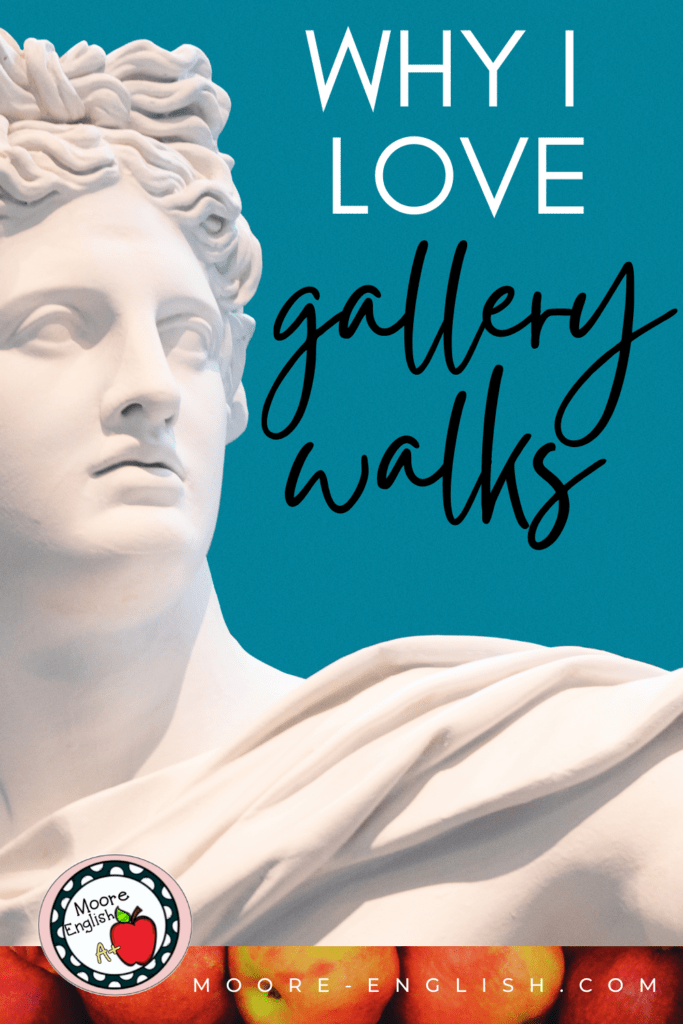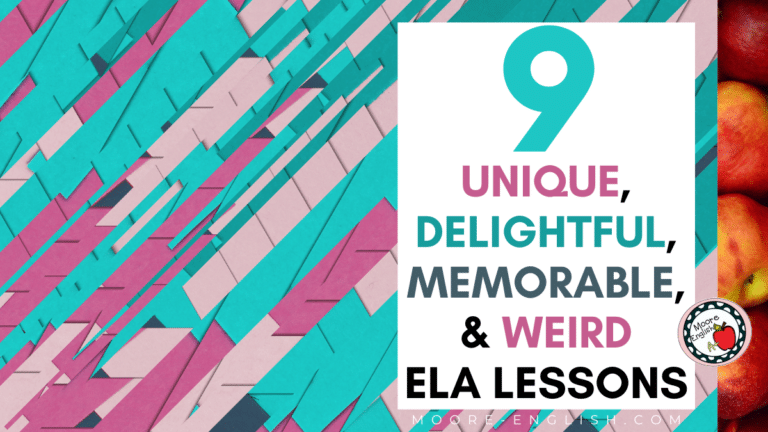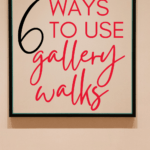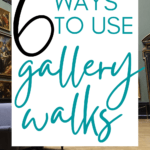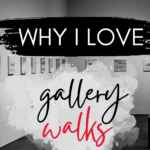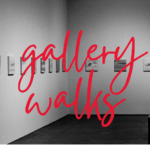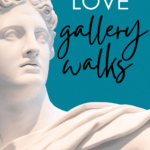After two years of pandemic teaching when we were asked to limit classroom movement, I am so excited to bring back more meaningful movement in the classroom. Meaningful movement promotes collaboration and cooperation. The motion also provides students with opportunities to refocus and readjust. Plus, associating learning with movement is a great retrieval strategy. Gallery walks have become one of my favorite strategies for meaningful movement.
The advantages of gallery walks are diverse!
- First, gallery walks promote motion but not chaos. The clear procedure keeps students feeling safe enough to take academic risks.
- Second, gallery walks promote collaboration. Teachers can “stack” the groups to break up cliques and expose students to a variety of classmates. Additionally, this means teachers can easily differentiate in a gallery walk.
- However, gallery walks are flexible enough that students can also complete them independently if you’re focused on promoting quiet reflection or independent study.
- Similarly, because gallery walks are so flexible, they can be digital or in-person. Sometimes a digital component is a great way to gather formative feedback without the hassle of shuffling papers.
- Finally, gallery walks travel. If your classroom space isn’t ideal for a gallery walk, you can move to a hallway, collaborative space, library, or courtyard. A different setting can provide optimum opportunity for promoting retrieval strategies.
Today, I want to share 6 different ways English language arts teachers can use gallery walks.
Replace a Lecture with Gallery Walks
My favorite way to use a gallery walk is to replace a lecture. Instead of the teacher standing at the front of the room pontificating on a subject, students can “walk” the room to encounter different parts of the lecture.
For example, when my seniors are building context for reading Beowulf, we use this set of background notes. Students move around the room and “view” each section of the notes. They either complete a graphic organizer or a gap fill as they move through the gallery. (The gap fill is my choice when differentiation is a must!)
Overall, this strategy can be adapted to build historical context for nearly any text. Gallery walks are the perfect way to replace a boring introductory lecture! Check out similar ideas for introducing these texts:
A Visualization Strategy
The idea of gallery walks comes from the idea of walking through a museum. With this instructional strategy, students encounter different graphic works. In the English language arts class, this might sound a little tricky. What role does artwork play in ELA?
Well, it’s pretty well documented that I think CCSS.RA.7 is a monsterous standard. This standard asks students to synthesize across mediums. That makes it a perfect candidate for gallery walks! I often use this strategy when students are reading a classic work, something that artists have envisioned multiple times through the centuries. Students browse the gallery to compare and contrast. They look for common themes and evaluate artists’ choices in the same way that they evaluate an author’s choices.
Since it can be time consuming for teachers to gather all these images, I have done the legwork for you and put together a series of visualization collections:
- Visualizing Beowulf
- Visualizing Shakespeare
- The Rime of the Ancient Mariner
- Visualizing the Fall of Icarus
Inquiry-based learning and Gallery Walks
When introducing a new vocabulary term, I love to use inquiry-based learning. In general, this works when students are given a series of examples and then asked to work backwards to develop a definition. Oftentimes, I just do this in small groups. However, combining inquiry-based learning with a gallery walk adds another layer that makes the lesson take a little longer but also makes it far more special! Here are some of my favorite resources for inquiry-based learning:
Task Cards and Gallery Walks
Sometimes gallery walks are the perfect way to practice a new skill or engage in test prep. Sometimes students simply need frequent repetition of a skill to develop their capacity and aptitude for that task. For example, evaluating tone or mood requires lots of repetitions. However, simply doing a series of worksheets is dull, dull, dull. To provide students with a chance to practice without boring them to pieces, teachers can consider gallery walks.
To quickly put together a skill-based gallery walk, I will open a set of task cards and choose the cards that focus on the skills I’m interested in emphasizing. Each card becomes a different stop in the gallery walk. Putting up chart paper with each card can also become a way for students to annotate the card or show their thinking.
Additionally, task cards provide a great way to differentiate instruction. Teachers can “stack” the deck so certain cards go to certain students. To do this in a gallery walk, simply place a second card at each stop and tell students if they are responsible for card A or card B. Students don’t even question when I do this. They assume that my goal is to prevent cheating, not to provide differentiation.
Here are some task cards that lend themselves well to the gallery walk strategy:
- Poetry Task Cards
- Rhetoric Task Cards
- Characterization Task Cards
- Figurative Language Task Cards
- Research and Informational Text Task Cards
Grab all of these task cards with the Task Cards Bundle! With 192 cards, teachers can mix and match to cover a variety of skills. This is my go-to strategy during test prep season!
2 Quiet Gallery Walk Options
Oftentimes teachers shy away from gallery walks because they feel chaotic. Especially if you’re new to gallery walks, these two options favor silence and thoughtfulness over chatter.
- First, gallery walks can provide a great way to engage in peer revision and editing. Teachers hang copies of student work. Student writers can even identify on what areas of their writing they want feedback, or student work can be hung anonymously. Students travel from student example to student example providing feedback. Before doing this, it’s important to establish norms. I also ask students to sign their feedback in case there is a problem. When the writing is longer, this can be an opportunity for digital gallery walks.
- Second, silent discussion can become part of a gallery walk. Students can generate different questions they have about a text (or teachers can ask specific questions). Then, students move through each part of the gallery walk responding to the original prompt and to peer responses. Silent discussion can also be completed digitally if that’s more your speed. Check out my silent discussion templates!
Before and After Your Gallery Walk
It’s worth noting that gallery walks require a lot of trust from teachers. To create a classroom environment where students can safely complete a gallery walk, it’s important to have clear classroom procedures in place.
Similarly, before the gallery work, it’s important to establish norms for this kind of large-scale classroom movement. Ask students to be explicit about what is expected of them, what’s expected of the teacher, and how they should behave if they have a question.
Finally, reflection is an important part of ending a gallery walk. Students can provide feedback by writing on the back of their gallery walk worksheet, or they can do a quick exit ticket. They can also think metacognitively about what parts of the gallery walk worked and which ones they’d like to improve in the future.

